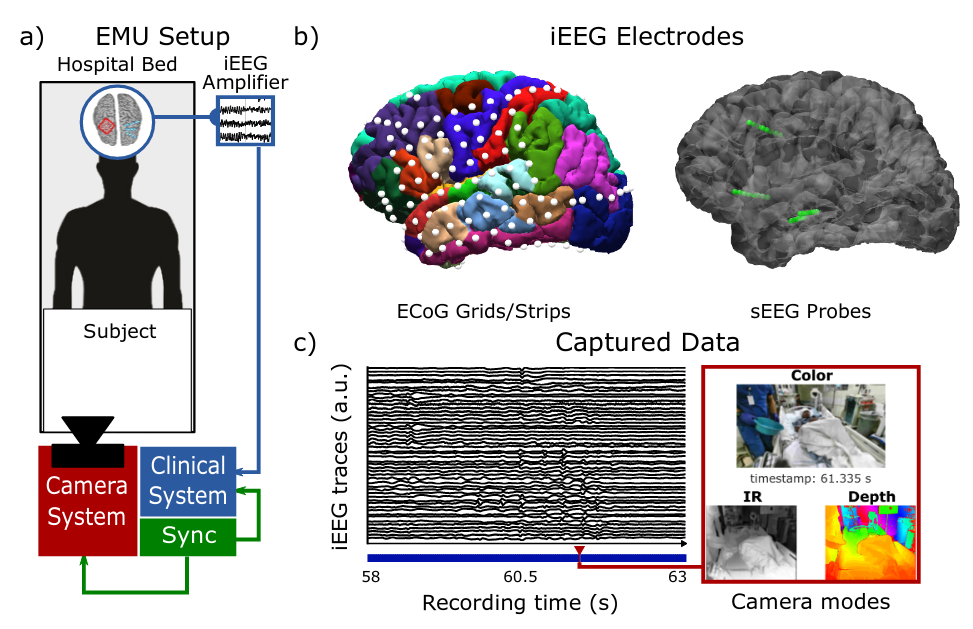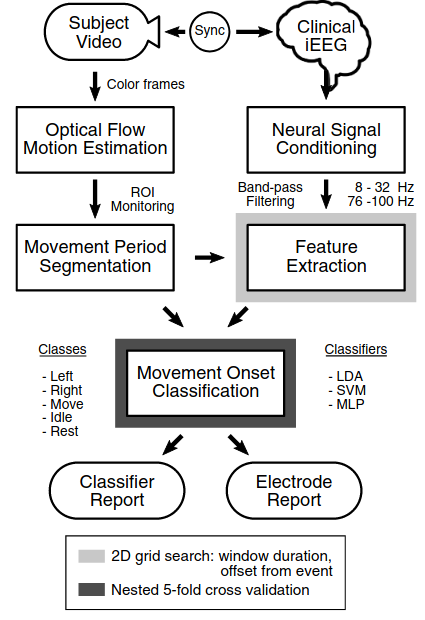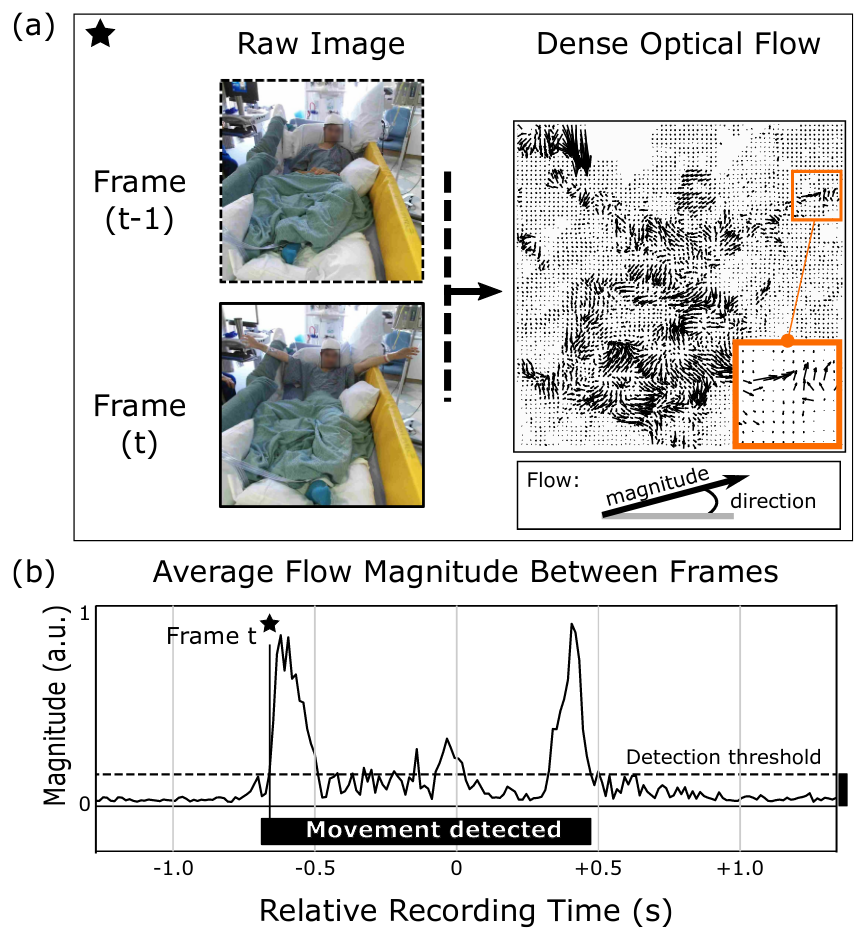Neural Correlates of Unstructured Motor Behaviors
P. Gabriel, K. Chen, A. Alasfour, T. Pailla, W.K. Doyle, O. Devinsky, D. Friedman, P. Dugan, L. Melloni, T. Thesen, D. Gonda, S. Sattar, S. Wang, and V. Gilja, “Neural Correlates of Unstructured Motor Behaviors,” Journal of Neural Engineering, vol. 16, no. 6, pp. 066026, 2019, doi: 10.1088/1741-2552/ab355c.
Paper: https://iopscience.iop.org/article/10.1088/1741-2552/ab355c
Abstract
Objective. We studied the relationship between uninstructed, unstructured movements and neural activity in three epilepsy patients with intracranial electroencephalographic (iEEG) recordings. Approach. We used a custom system to continuously record high definition video precisely time-aligned to clinical iEEG data. From these video recordings, movement periods were annotated via semi-automatic tracking based on dense optical flow. Main results. We found that neural signal features (8–32 Hz and 76–100 Hz power) previously identified from task-based experiments are also modulated before and during a variety of movement behaviors. These movement behaviors are coarsely labeled by time period and movement side (e.g. ‘Idle’ and ‘Move’, ‘Right’ and ‘Left’); movements within a label can include a wide variety of uninstructed behaviors. A rigorous nested cross-validation framework was used to classify both movement onset and lateralization with statistical significance for all subjects. Significance. We demonstrate an evaluation framework to study neural activity related to natural movements not evoked by a task, annotated over hours of video. This work further establishes the feasibility to study neural correlates of unstructured behavior through continuous recording in the epilepsy monitoring unit. The insights gained from such studies may advance our understanding of how the brain naturally controls movement, which may inform the development of more robust and generalizable brain–computer interfaces


